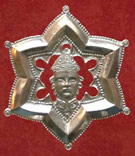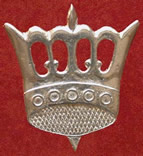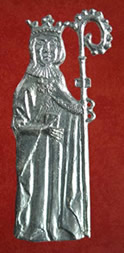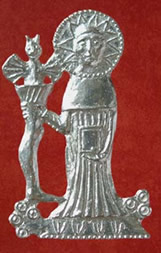Pilgrim Badges
When looking at pilgrim badges it is perhaps best not to look at them as simple objects but rather as symbols of what was a medieval obsession; that of pilgrimage.
Medieval society was religious to an extent that is perhaps difficult to fully comprehend today. God's ability to affect every aspect of one's life, from birth to grave and beyond, was unquestioned. This belief manifested itself in the cult of pilgrimage. The saints were seen as God's 'agents' on earth, and to visit a saint's shrine offered many benefits, of which the hope of cure for an illness or absolution for a sin were the most common. Pilgrimage also gave people the chance to escape their everyday lives, as the promise of travel, company, and new sights must have been as alluring then as it is today.


To the medieval mind, the miracle working power of a shrine or relic could be transferred to anything that came into contact with it and so souvenirs associated with the shrine were highly sought after, not just as keepsakes but as secondary relics. Originally, pilgrims sought to remove pieces of the shrine or building that housed it, but, as the church saw their building being steadily eroded they hit on the idea of manufacturing souvenirs to satisfy the pilgrims 'hunger'. The first manufactured souvenirs were ampullae; little containers in which holy water could be stored. However, these were difficult to manufacture and offered little scope for diversity of design, and so by the 14th century badges were in production. Soon all the shrines across Europe were making badges in vast numbers and each to their own particular design. For pilgrims, the chance to buy a souvenir which had been in some way connected with a saint's shrine was irresistible, for not only may that badge possess its own miracle working powers, but it would also serve as proof of the bearers status as a pilgrim.


Badges were manufactured to a variable quality. Some were naive and crudely made, while others, such as those made at Canterbury in the late 14th century displayed superb craftsmanship of a standard that would not have disgraced the finest goldsmith.
The quantity that these badges were produced in is staggering; records show that the most popular shrines were able to sell in excess of 100,000 badges a year, making pilgrim badges the first truly mass produced tourist souvenir.
The pilgrim badge making industry in England died out in the early 16th century as pilgrimage initially declined in popularity and was then banned as the country turned to Protestantism, for whom the idea of pilgrimage with all its superstition and idolatry was anathema.



